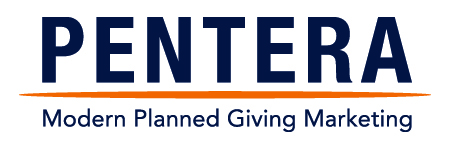| Don’t ‘Set It and Forget It’: Annual Charitable Gift Annuity Program Document Maintenance |
| News |
| Written by Pamela D. Leonard, CFRE |
|
To keep charitable gift annuity programs running as smoothly as possible, a regular audit of program forms and documents should be completed. This audit ought to occur at least annually, and immediately after updates in legislation governing charitable gift annuities, as recently seen with the Legacy IRA Act. Not to be confused with annual state filings, this regular audit should be a specific review and update, if needed, of the program’s disclosure statements, application, and direct deposit form. Disclosure statementsThe Philanthropy Protection Act of 1995 requires that each charitable organization that issues charitable gift annuities provide a written disclosure statement to prospective donors. The act does not include specific requirements that must be included in a disclosure, so they vary slightly among charities. Disclosure statements generally include a description of a charitable gift annuity, confirmation that the annuity is not a commercial investment, explanation of determined rates, confirmation that the obligation of the charity is a general claim on all assets of the charity, option for the charity to reinsure the annuity, and statement of existence of a reserve fund that complies with the investment requirements of applicable state law. Annually, you will want to review your entire disclosure statement for accuracy while making these specific revisions:
Recently, due to the Legacy IRA Act, your disclosure statement should provide for these changes to charitable gift annuities funded with qualified charitable distributions from an IRA:
ApplicationsWhen issuing charitable gift annuities, most organizations use an application to gather gift and donor information. Common data that is gathered through the application includes: gift amount, payment frequency, election of IRS discount rate, annuitant details and how the funding asset(s) are owned. Annually, you will want to review your application for accuracy and consider including common follow-up questions that your staff tend to need to ask donors after receiving an application, during the contract generation process. The Legacy IRA Act also saw many charities updating their charitable gift annuity applications to provide for these changes and questions when a donor is using a qualified charitable distribution from an IRA to fund their annuity:
Direct deposit formsHaving charitable gift annuity payments directly deposited into annuitant bank accounts is easy and preferred by most organizations. Direct deposit forms are simple one-page documents that are completed by annuitants and filed with organizations. Even though changes to direct deposit forms are rare, they should be reviewed as a component of a comprehensive charitable gift annuity program. Consideration should be given to offering direct deposit to donors not currently enrolled which may provide cost savings and efficiency to issuing organizations. Organizations spend a lot of time and resources setting up charitable gift annuity programs. As good program stewards, annual maintenance should be conducted above and beyond annual state filing requirements. A review of the program documents included in this article is a good starting point to create a tradition of review. ‘SET IT AND FORGET IT’ might work for rotisseries or dehydrators, but it is not a best practice with successful charitable gift annuity programs. |
| Last Updated on Thursday, February 15, 2024 12:13 PM |


 Anyone around in the 1980s will remember the popular infomercial craze. One of the most famous taglines shouted out on a regular interval was ‘SET IT AND FORGET IT’ as a reflection of the worry-free use of their line of kitchen appliances. With the constant demands on our time, the thought of setting up a program and forgetting about it while moving on to other pressing matters is a nice concept - if only it worked that way!
Anyone around in the 1980s will remember the popular infomercial craze. One of the most famous taglines shouted out on a regular interval was ‘SET IT AND FORGET IT’ as a reflection of the worry-free use of their line of kitchen appliances. With the constant demands on our time, the thought of setting up a program and forgetting about it while moving on to other pressing matters is a nice concept - if only it worked that way! 






